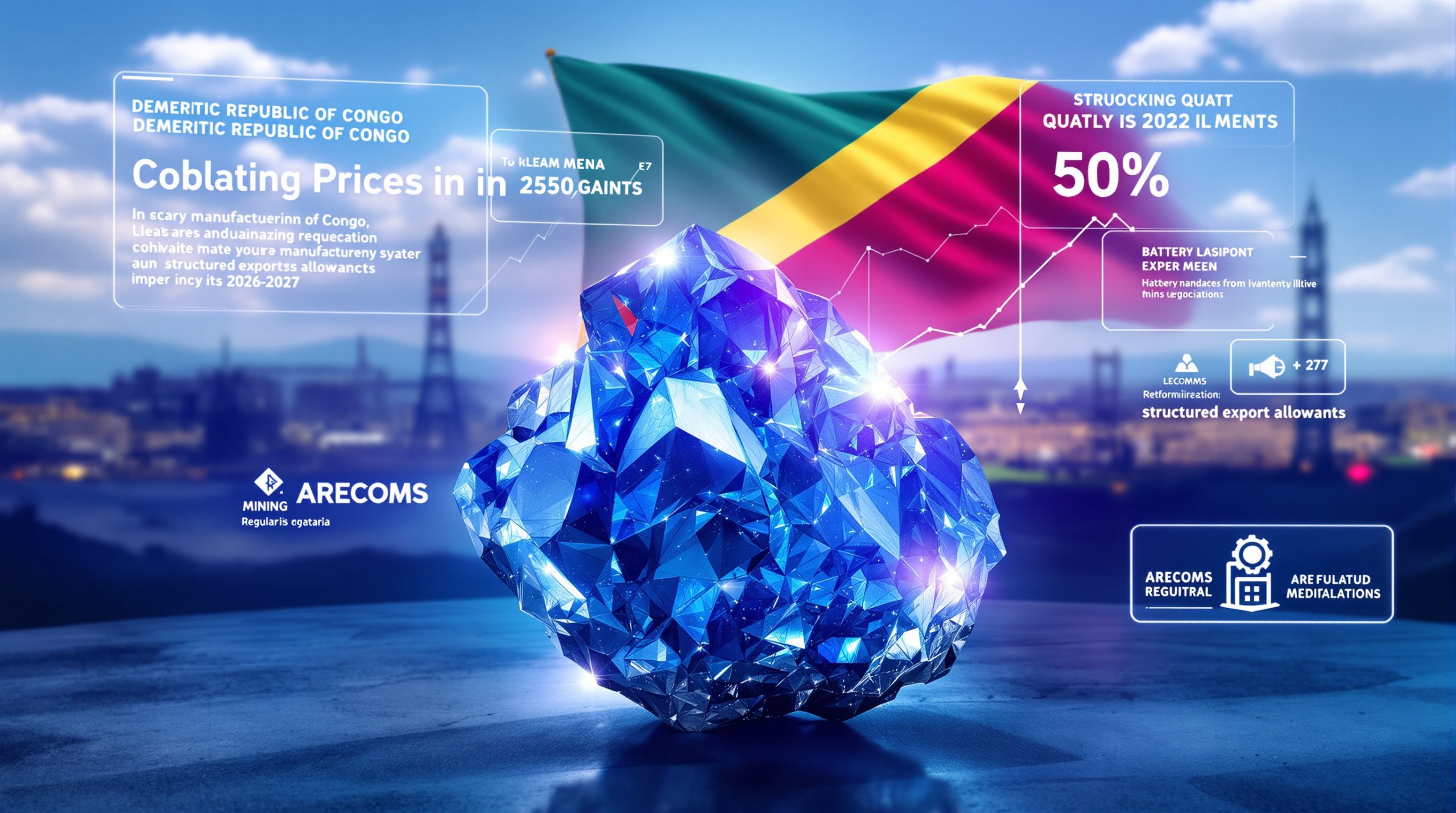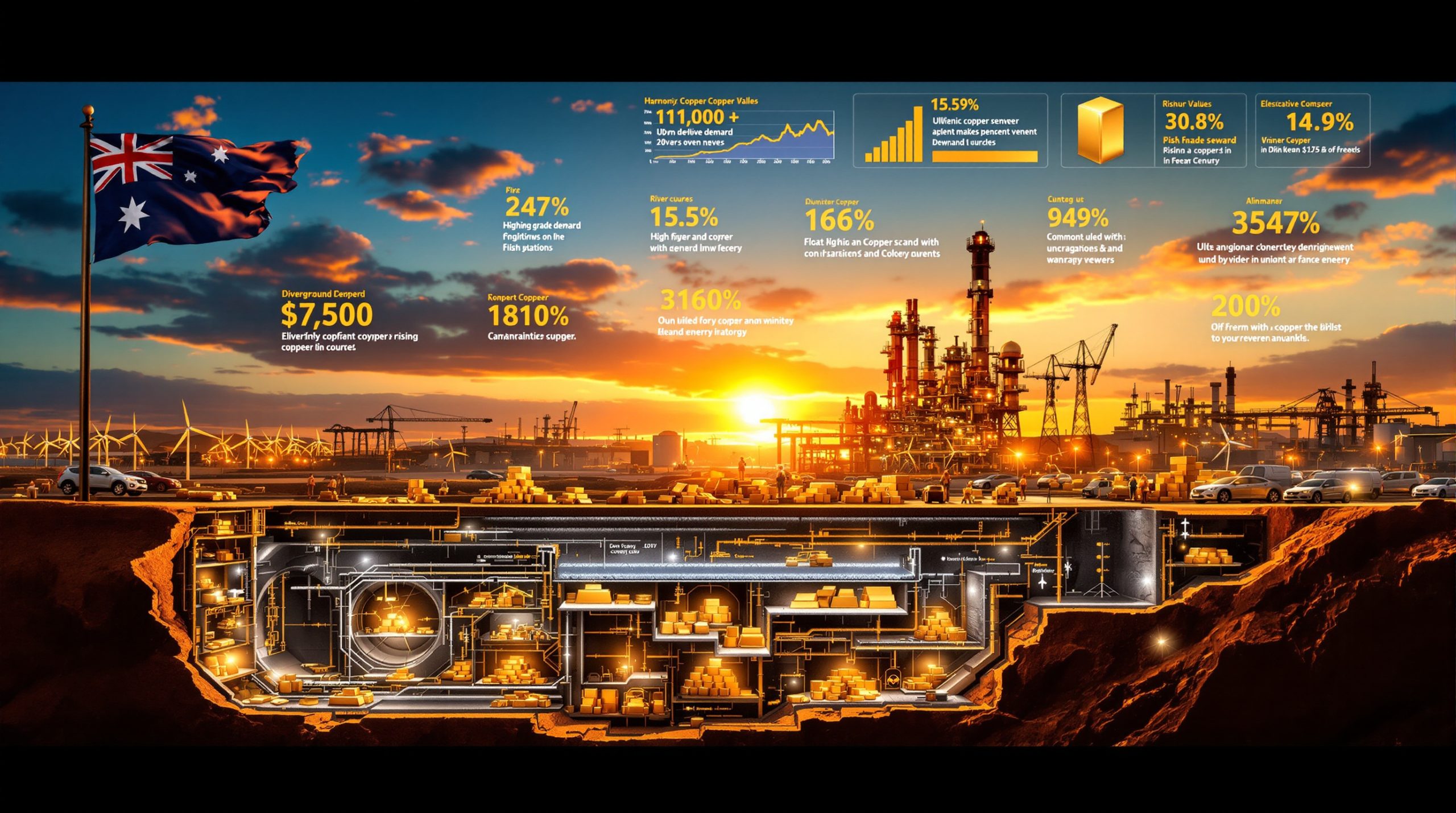Understanding China's Economic Slowdown and Its Global Ripple Effects
What is happening with China's economic stimulus efforts?
China's economic stimulus measures have significantly fallen short of market expectations, creating widespread ripple effects across global commodity markets. Despite multiple government interventions aimed at revitalizing the struggling property sector and boosting industrial activity, these efforts have proven insufficient to generate the anticipated economic momentum.
The property market—traditionally a major driver of steel consumption in China—continues to struggle with high debt levels, reduced construction activity, and waning investor confidence. According to China's National Bureau of Statistics, property investment declined 10.2% year-on-year in the first eight months of 2024, with new property starts plummeting 23.1% during the same period.
This persistent weakness has translated into lower steel production rates and diminished iron ore demand, directly affecting Australian mining companies that rely heavily on Chinese consumption. The situation has become particularly concerning as China accounts for approximately 70% of global production trends, according to the Australian Department of Industry, Science and Resources.
The Reserve Bank of Australia's August 2024 Statement on Monetary Policy noted: "Chinese authorities have implemented various policy measures to support the property sector and broader economy, but these have had limited success in reversing the structural headwinds facing real estate and construction activity."
How are iron ore prices responding to China's economic challenges?
Iron ore prices have experienced significant volatility in response to China's economic struggles. From trading above $140 per tonne in early 2024, prices have declined substantially, hovering around the $100 per tonne mark in recent months according to S&P Global Platts iron ore index data.
This downward pressure reflects the market's growing skepticism about China's ability to stimulate meaningful growth in steel-intensive sectors. According to ABARES (Australian Bureau of Agricultural and Resource Economics and Sciences), iron ore prices averaged $112.70 per tonne in Q1 2024 but have since retreated as stimulus hopes faded.
Financial analysts have issued increasingly cautious forecasts, with Bank of America warning that prices could potentially fall below $80 per tonne if Chinese demand continues to deteriorate. This price vulnerability creates a challenging environment for Australian iron ore producers who have historically benefited from China's robust appetite for the commodity.
The Australian Treasury analysis from October 2024 indicates that uranium market volatility has increased 15-20% in 2024 compared to 2023 levels, highlighting the uncertainty surrounding China's economic trajectory and its impact on commodity markets.
Analyzing the Market Impact on Major ASX Iron Ore Producers
How is BHP navigating the challenging iron ore market?
BHP (ASX: BHP), Australia's largest mining company, faces significant headwinds from China's economic slowdown. Despite efforts to diversify its portfolio across commodities like copper and potash, iron ore remains a critical revenue driver for the company, accounting for 40-45% of BHP's underlying EBITDA according to their August 2024 Investor Presentation.
Recent financial reports reveal concerning trends, with an 8% decline in overall revenue to $55.7 billion USD and a steeper 26% drop in underlying profit to $13.7 billion USD for FY2024, largely attributed to weaker iron ore and coal prices.
BHP's share price has reflected these challenges, experiencing notable volatility following disappointing Chinese stimulus announcements, trading in the $40-46 AUD range throughout most of 2024 according to ASX historical data.
Macquarie Research noted in their September 2024 Metals & Mining Sector Report: "BHP's diversified commodity portfolio provides some buffer against iron ore weakness, but the company remains significantly exposed to Chinese demand dynamics. Cost discipline and operational efficiency remain critical in the current pricing environment."
The company's strategic response includes cost optimization initiatives and careful capital allocation to weather the current market conditions while maintaining its processing facilities for an eventual market recovery. With iron ore production reaching 254.8 million tonnes in FY2024 and C1 costs of approximately $18-20 per tonne, BHP maintains one of the industry's lowest cost positions, providing some resilience despite price pressures.
What challenges does Rio Tinto face amid declining Chinese demand?
Rio Tinto (ASX: RIO) confronts similar market pressures as its iron ore-dependent business model feels the impact of China's economic struggles. According to the company's Half-Year Results from July 2024, iron ore shipments reached 161.5 million tonnes in the first half of 2024, with the division representing approximately 60-65% of underlying earnings.
The company has seen its share price fluctuate in response to Chinese policy announcements, with notable declines following underwhelming stimulus packages. While Rio Tinto has made strategic investments to diversify into battery materials like lithium and expand its copper operations, including the recent $6.7 billion acquisition of Arcadium Lithium, iron ore remains its primary profit generator.
Morgan Stanley equity research from September 2024 observed: "Rio Tinto's high-grade iron ore products (approximately 62% Fe) command premiums in weak market conditions, but the company faces increasing competition from Brazilian suppliers and potential demand destruction at current price levels."
The company's financial performance has been constrained by the combination of falling spot prices and rising operational costs. With H1 2024 underlying earnings of $5.8 billion USD and an average realized iron ore price of $107 per tonne FOB, Rio Tinto's management has emphasized productivity improvements and operational efficiency as key focus areas to maintain profitability during this challenging period.
How is Fortescue positioned amid iron ore market volatility?
Fortescue Metals Group (ASX: FMG) demonstrates both resilience and vulnerability in the current market environment. The company achieved iron ore shipments of 192.4 million tonnes in FY2024, showcasing its operational strength according to their Preliminary Final Report from August 2024.
However, this production success was overshadowed by financial challenges, with revenue declining 15% to $17.8 billion USD and net profit after tax plunging 41% year-on-year to $5.3 billion USD due to lower realized prices. With an average realized iron ore price of $87 per tonne FOB in FY2024—lower than premium producers due to its lower grade ore—Fortescue is particularly sensitive to market fluctuations.
Fortescue's share price has been particularly reactive to Chinese economic news, dropping over 7% following disappointing stimulus announcements in September 2024. The company's strategic diversification into green energy through Fortescue Future Industries represents an attempt to reduce its dependence on iron ore, with capital allocation of approximately $700-800 million in FY2024 directed toward green hydrogen and green ammonia projects.
Citi Research noted in their September 2024 Mining Sector Update: "Fortescue's lower-grade ore products (typically 58% Fe) face greater pricing pressure in weak markets, with wider discounts to benchmark prices. The company's diversification into green energy through Fortescue Future Industries represents a strategic hedge but carries execution risks."
With C1 costs of $18.64 per tonne in FY2024, Fortescue maintains competitive operating expenses, but its product quality challenges make it more vulnerable to pricing pressures than its larger competitors offering higher-grade products.
What are the prospects for Mineral Resources in the current market?
Mineral Resources (ASX: MIN) presents a more diversified profile compared to pure-play iron ore producers, though it remains significantly exposed to iron ore price fluctuations. The company's dual focus on iron ore and lithium provides some buffer against sector-specific downturns, but both commodities have faced price pressures in recent months.
Mineral Resources' iron ore operations, while smaller than those of the major producers with approximately 16-18 million tonnes shipped in FY2024, still contribute substantially to its revenue stream. The company operates the Utah Point facility with 50 million tonne per annum capacity, according to their Annual Report 2023.
The company's financial performance reflects the challenging market conditions, with margins compressed by lower commodity prices. Management's strategy emphasizes cost control and operational flexibility to navigate the current market volatility.
The company's strong presence in the lithium market could help weather the storm in the iron ore sector, but its iron ore exposure still represents a notable risk. As the Chinese property market continues to struggle, Mineral Resources will need to balance its iron ore business with its expanding battery materials operations to reduce reliance on volatile iron ore prices.
Examining Key Market Indicators and Future Outlook
What do current iron ore price forecasts indicate?
Iron ore price forecasts paint a concerning picture for Australian producers. Market analysts have progressively lowered their price expectations as China's economic challenges persist. Citi projects iron ore prices to average just $85 per tonne in 2026, representing a significant decline from recent levels, according to their Commodities Research report from September 2024.
Bank of America analysts have warned of potential sub-$80 prices if Chinese demand continues to deteriorate, creating a bear case scenario that would significantly impact producer margins. Meanwhile, the Australian Government's resources forecaster ABARES predicts prices of $95 per tonne for 2025 and $90 per tonne for 2026 in their September 2024 Resources and Energy Quarterly.
Goldman Sachs maintains a slightly more optimistic outlook with a forecast of $100 per tonne for 2025 average, while broader consensus analyst forecasts compiled by Bloomberg range between $85-105 per tonne for 2025.
These forecasts reflect growing skepticism about China's ability to stimulate meaningful growth in steel-intensive sectors. The pricing outlook creates significant uncertainty for Australian miners, potentially impacting investment decisions, dividend policies, and operational strategies.
Wood Mackenzie stated in their Q3 2024 Iron Ore Market Service: "The structural slowdown in Chinese construction activity, combined with increasing supply from both established and new producers, suggests a multi-year period of lower iron ore prices compared to the 2020-2022 boom period."
How might supply-demand dynamics evolve in the coming years?
The iron ore market faces evolving supply-demand dynamics that could further pressure prices. On the supply side, Australia's production is expected to reach 920-950 million tonnes in 2025 according to ABARES, while Brazilian production is forecast at 400-420 million tonnes for the same period based on Vale investor presentations and Brazilian mining association data.
New projects in Guinea, particularly the Simandou iron ore project targeting first production by 2025-2026 with eventual capacity of 120-150 million tonnes per annum, are gradually advancing toward production. This supply growth coincides with subdued demand from China, creating potential market imbalances.
Global seaborne iron ore supply growth of 2-3% annually is expected through 2026 according to Wood Mackenzie, while Chinese steel consumption is forecast to decline 0-2% annually during the same period per World Steel Association projections.
While some analysts point to India's industrialization as a potential new demand source, with steel consumption growing at 6-8% annually, its total market of approximately 130 million tonnes remains roughly one-eighth of China's consumption, making it insufficient to offset Chinese weakness in the near term.
Morgan Stanley's commodities team wrote in their September 2024 update: "The iron ore market is transitioning from a period of supply tightness to one of adequate, potentially excessive, supply. This shift will test the pricing power of major producers and likely result in capacity curtailments among higher-cost marginal producers."
The combination of expanding supply and constrained demand creates a challenging environment for price recovery, suggesting Australian miners may need to adapt to a "lower for longer" price scenario.
What are the key risks and opportunities for investors in ASX iron ore stocks?
Investors in ASX-listed iron ore companies face a complex risk-reward equation. The primary downside risks include:
- Further deterioration in Chinese demand, particularly if property market weakness persists
- Additional supply coming online from Guinea's Simandou project and other global developments
- The potential for trade tensions between Australia and China, highlighted by recent reports of purchasing disruptions
- Widening discounts for lower-grade iron ore products as steel mills prioritize efficiency and environmental compliance
- Rising operational costs eroding profit margins even if prices stabilize
Conversely, opportunities exist in the form of:
- Potential Chinese policy shifts toward more aggressive infrastructure stimulus
- Production disruptions in competing regions due to weather, labor, or geopolitical factors
- The miners' own cost-reduction initiatives and productivity improvements
- Diversification strategies reducing exposure to iron ore price volatility
- Attractive dividend yields supporting share prices despite earnings pressure
The major Australian iron ore producers maintain investment-grade credit ratings from S&P, Moody's, and Fitch as of 2024, reflecting their strong balance sheets and financial flexibility despite market challenges.
Investors must carefully weigh these factors when assessing the sector, with particular attention to company-specific attributes like cost positions, balance sheet strength, and diversification strategies. Time horizons become especially important in the current environment—short-term investors face significant volatility and downside risks, while long-term investors may find value if current share prices adequately discount the challenging outlook.
Analyzing Broader Economic Implications
How does China's stimulus failure affect Australia's economic outlook?
China's stimulus shortcomings have broader implications for Australia's economic prospects. Iron ore exports represent a significant contributor to Australia's trade balance, tax revenues, and overall economic health, with the commodity accounting for approximately 70% of Australian seaborne iron ore trade according to the Australian Department of Industry, Science and Resources.
The combination of lower prices and potentially reduced export volumes threatens to weaken Australia's terms of trade and currency strength. Economic forecasters have noted this vulnerability, with some revising growth projections downward to reflect commodity sector challenges.
The Australian Treasury analysis from October 2024 suggests that the 15-20% increase in iron ore price volatility has contributed to uncertainty in economic forecasting and fiscal planning. Every $10 per tonne movement in iron ore prices translates to billions in export revenue and tax implications for the Australian economy.
While Australia's economy has demonstrated resilience through diversification into services, agriculture, and other sectors, the mining sector's importance means that persistent weakness in iron ore markets could create meaningful economic headwinds, particularly for Western Australia where much of the industry is concentrated.
What potential policy responses might emerge from this situation?
The challenging iron ore market could trigger various policy responses from different stakeholders:
-
Australian miners may accelerate diversification efforts, both geographically (seeking markets beyond China) and across commodities (investing in future-facing minerals like copper, lithium, and rare earths).
-
The Australian government might consider measures to support the resources sector, potentially through:
- Tax incentives for exploration and development
- Infrastructure investments to reduce logistics costs
- Diplomatic efforts to secure market access and reduce trade tensions
- Research and development support for higher-value, lower-emissions mining and processing technologies
-
Chinese policymakers face pressure to implement more effective stimulus measures, particularly in construction and infrastructure, which could eventually benefit iron ore demand. However, the government's approach appears focused on:
- Targeted support rather than broad-based stimulus
- Prioritizing consumer spending over property investment
- Emphasizing quality growth over quantity
- Managing financial stability concerns
-
Central banks including the Reserve Bank of Australia may need to factor commodity market weakness into monetary policy decisions, potentially maintaining accommodative policies longer if economic growth is impacted.
These policy dynamics will shape the medium-term outlook for the sector. JPMorgan commodities research noted in September 2024: "While we don't expect a collapse in iron ore prices given production discipline among major miners, the days of sustained $120+ prices appear behind us without significant supply disruptions or unexpected Chinese stimulus."
Practical Investment Considerations
How should investors approach ASX iron ore stocks in the current environment?
Investors considering ASX iron ore stocks should adopt a cautious approach that acknowledges both near-term challenges and long-term fundamentals. Given the market uncertainty, several strategies warrant consideration:
1. Portfolio diversification is essential, avoiding overexposure to the iron ore sector despite potentially attractive dividend yields. A balanced approach might include:
- Limiting iron ore stocks to an appropriate percentage of total portfolio based on risk tolerance
- Considering exposure to other mining subsectors with different demand drivers
- Including non-resource stocks to reduce correlation with commodity cycles
2. Quality selection criteria should prioritize companies with:
- Lower cost positions providing margin protection during price weakness
- Strong balance sheets with manageable debt levels
- Geographic and commodity diversification reducing single-market dependency
- Track records of operational excellence and capital discipline
- Clear strategies for navigating market downturns
3. Income vs. growth expectations need calibration:
- Dividend yields remain attractive for major producers (5-8% range) despite earnings pressure
- Share price appreciation potential may be limited in the near term
- Total return expectations should be moderated compared to the boom years
4. Time horizons are particularly important:
- Short-term investors face significant volatility and downside risks
- Medium-term investors should prepare for potential "lower for longer" price scenarios
- Long-term investors may find value if current share prices adequately discount the challenging outlook
5. Technical analysis and entry points deserve attention:
- Consider dollar-cost averaging rather than lump-sum investments
- Watch for support levels and oversold conditions
- Monitor relative performance against broader market indices
UBS Investment Research noted in their August 2024 report: "BHP's Pilbara operations maintain among the lowest cost positions globally at approximately $18-20 per tonne C1 costs, providing resilience in a lower price environment, though profitability remains pressured."
What technical indicators should investors monitor?
Several key indicators warrant close monitoring for those invested in or considering the iron ore sector:
1. Chinese economic indicators:
- Property market metrics: sales volumes, prices, new starts, and completions
- Manufacturing PMI data, particularly steel-intensive sectors
- Fixed asset investment growth rates, especially infrastructure and construction
- Steel production and capacity utilization rates
- Credit growth and financing conditions for property developers
2. Supply-side metrics:
- Port inventory levels in China (currently approximately 149 million tonnes per Mysteel Global)
- "Days of consumption" inventory metric (currently 35-40 days)
- Shipping rates for bulk carriers as demand indicators
- Production disruptions or expansions from major producers
- Progress updates on new exploration projects like Guinea's Simandou
3. Price differentials and quality spreads:
- High-grade (65% Fe) premiums over benchmark (currently $5-15 per tonne)
- Low-grade (58% Fe) discounts to benchmark (currently $8-18 per tonne)
- Lump premiums over fines (typically $0.08-0.15 per percentage point)
- Impact of environmental regulations on quality preferences
4. Australian dollar movements:
- AUD/USD correlation with iron ore prices
- Translation effects on reported earnings
- Impact on relative competitiveness of Australian exports
5. Policy announcements:
- Chinese stimulus measures, particularly related to infrastructure and property
- Environmental regulations affecting steel production
- Trade policy developments between Australia and China
- Australian monetary and fiscal policy responses
CRU Group analysis from August 2024 indicated: "Chinese steel demand has likely peaked, with decarbonization policies, electric arc furnace adoption, and economic rebalancing all contributing to structurally lower iron ore intensity of Chinese economic growth."
FAQ: China's Stimulus Failure and Australian Iron Ore Stocks
How significant is China's role in global iron ore demand?
China dominates global iron ore consumption, accounting for approximately 70-75% of seaborne iron ore trade according to the Australian Department of Industry, Science and Resources. This concentration makes the market particularly vulnerable to Chinese economic conditions.
Chinese steel production reached 1.065 billion tonnes in 2023, representing over 50% of global steel output according to World Steel Association data. This massive production capacity requires enormous iron ore imports, with China typically importing 1.1-1.2 billion tonnes annually.
Despite efforts to diversify export markets, Australian miners remain heavily dependent on Chinese demand, with limited short-term alternatives of comparable scale. This market concentration explains why Chinese economic policies and stimulus measures receive such intense scrutiny from iron ore investors.
The steel intensity of China's economy has been declining as it transitions from infrastructure-led growth toward consumption and services, but the sheer size of the market means even small percentage changes in demand can significantly impact global iron ore balances.
Could other markets replace China's iron ore demand?
While emerging economies like India are increasing their steel production and iron ore consumption, they cannot fully replace China's market significance in the near term. India's steel sector is growing steadily at 6-8% annually according to the World Steel Association, but remains roughly one-eighth the size of China's, with total consumption of approximately 130 million tonnes compared to China's billion-tonne market.
Other developing regions face infrastructure and capacity constraints that limit their ability to absorb significant additional iron ore volumes:
- Southeast Asian nations are expanding steel capacity but collectively represent less than 10% of Chinese demand
- African infrastructure development shows promise but from a very low base
- Middle Eastern construction activity remains vulnerable to oil price fluctuations
- Latin American economies face their own growth challenges and fiscal constraints
This reality means that Australian miners must navigate the challenges in the Chinese market rather than simply pivoting to alternative destinations. The geographic proximity of Australia to Asian markets provides a shipping cost advantage, but this benefit applies primarily within the region rather than to more distant potential markets.
Long-term diversification efforts continue, but the market structure will likely remain China-centric for at least the coming decade based on existing steel production capacity and development trajectories.
How are iron ore miners adapting their strategies?
Australian iron ore producers are implementing multi-faceted strategies to navigate the challenging market:
1. Cost optimization remains a priority, with investments in:
- Automation technologies reducing labor costs and improving safety
- Process improvements increasing operational efficiency
- Energy efficiency measures reducing input costs
- Logistics optimization minimizing transportation expenses
- Digital technologies enabling predictive maintenance and reduced downtime
2. Product quality initiatives focus on:
- Producing higher-grade ores commanding premium prices
- Reducing impurities that trigger discounts
- Developing specialty products for specific steel manufacturing processes
- Investing in beneficiation to improve the value of existing resources
3. Diversification efforts include:
- Expanding into future-facing minerals like copper and lithium
- Developing battery materials capabilities
- Exploring rare earths and other critical minerals
- Pursuing vertical integration opportunities
- Building market relationships beyond China
4. Capital allocation strategies have become more conservative:
- Prioritizing balance sheet strength over aggressive expansion
- Maintaining dividend policies while carefully managing payout ratios
- Focusing on brownfield expansions with lower capital intensity
- Implementing more rigorous project evaluation criteria
- Building cash reserves for opportunistic acquisitions during downturns
5. Sustainability initiatives address:
- Emissions reduction technologies and renewable energy adoption
- Water conservation and management practices
- Biodiversity and land rehabilitation programs
- Community engagement and social license considerations
- Governance structures supporting environmental and social objectives
These adaptations reflect the companies' recognition of a potentially extended period of market challenges. The major producers remain profitable even at current price levels due to their low-cost positions, but margin pressures are driving a renewed focus on operational excellence and strategic positioning.
What role does ESG play in the iron ore sector's future?
Environmental, social, and governance (ESG) considerations are increasingly influencing the iron ore sector's strategic direction. Decarbonization efforts are accelerating, with major miners investing in renewable energy, green hydrogen, and emissions reduction technologies.
These initiatives respond to investor expectations and potential regulatory changes that could affect competitiveness. The transition toward greener steel production methods may alter iron ore demand patterns, potentially favoring higher-grade ores that enable reduced emissions.
Specific ESG developments within the sector include:
Environmental factors:
- Scope 1 and 2 emissions reduction targets announced by all major producers
- Renewable energy investments, including solar and wind projects at mine sites
- Water management initiatives in water-stressed regions
- Land rehabilitation and biodiversity conservation programs
- Research into green hydrogen as a potential future reduction agent for iron ore
Social considerations:
- Indigenous engagement and cultural heritage protection following high-profile incidents
- Community development programs in mining regions
- Workforce diversity and inclusion initiatives
- Skills development and local employment priorities
- Health and safety performance improvements
Governance aspects:
- Enhanced disclosure of climate risks and opportunities
- Board-level oversight of sustainability strategies
- Integration of ESG metrics into executive compensation
- Stakeholder engagement processes and transparency
- Ethical supply chain management and modern slavery compliance
Forward-thinking miners are positioning themselves for this evolution through product quality improvements and sustainability initiatives. The sector's ESG performance will likely become an increasingly important differentiator for investors, particularly institutional funds with ESG mandates, and could impact access to capital and valuation multiples over time.
Further Exploration
Investors interested in learning more about the economic relationship between China and Australia's resource sector might consider exploring:
- Australian Government resources forecasts and analysis from ABARES
- Industry reports from major investment banks and commodity research firms
- Chinese economic data from official statistical bureaus and independent analysts
- Technical analysis of steel production methods and quality requirements
- Historical commodity cycle patterns and recovery trajectories
- Environmental regulations affecting both mining and steel production globally
- Alternative steel technologies that could impact future iron ore demand
Understanding the complex interplay between Chinese economic policy, global supply dynamics, and company-specific strategies will be essential for navigating investment decisions in this challenging but still fundamentally important sector of the Australian economy.
For a deeper understanding of China's economy, you might want to read about China's stimulus package deflating and its implications for ASX 200 iron ore shares. Additionally, keep an eye on iron ore stocks falling after China offers no new stimulus measures, which provides valuable insights into market reactions to policy decisions.
Ready to Stay Ahead of the Next Major Mineral Discovery?
Discovery Alert's proprietary Discovery IQ model delivers instant notifications when significant ASX mineral discoveries are announced, giving you a crucial market advantage. Visit the Discovery Alert discoveries page to see how previous major discoveries generated substantial returns and begin your 30-day free trial today.




